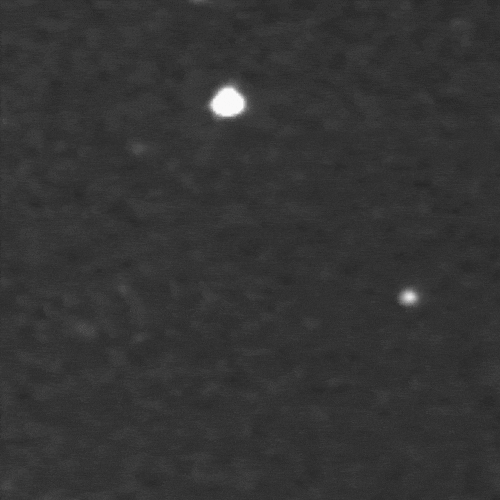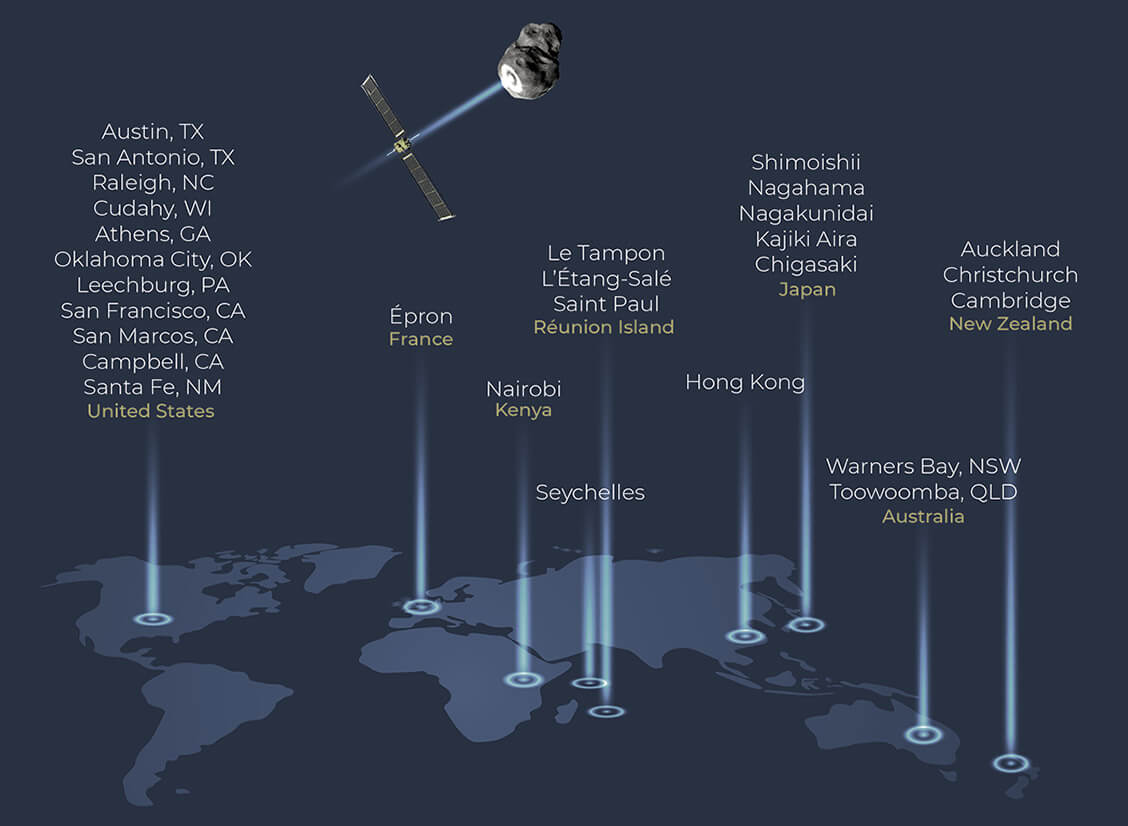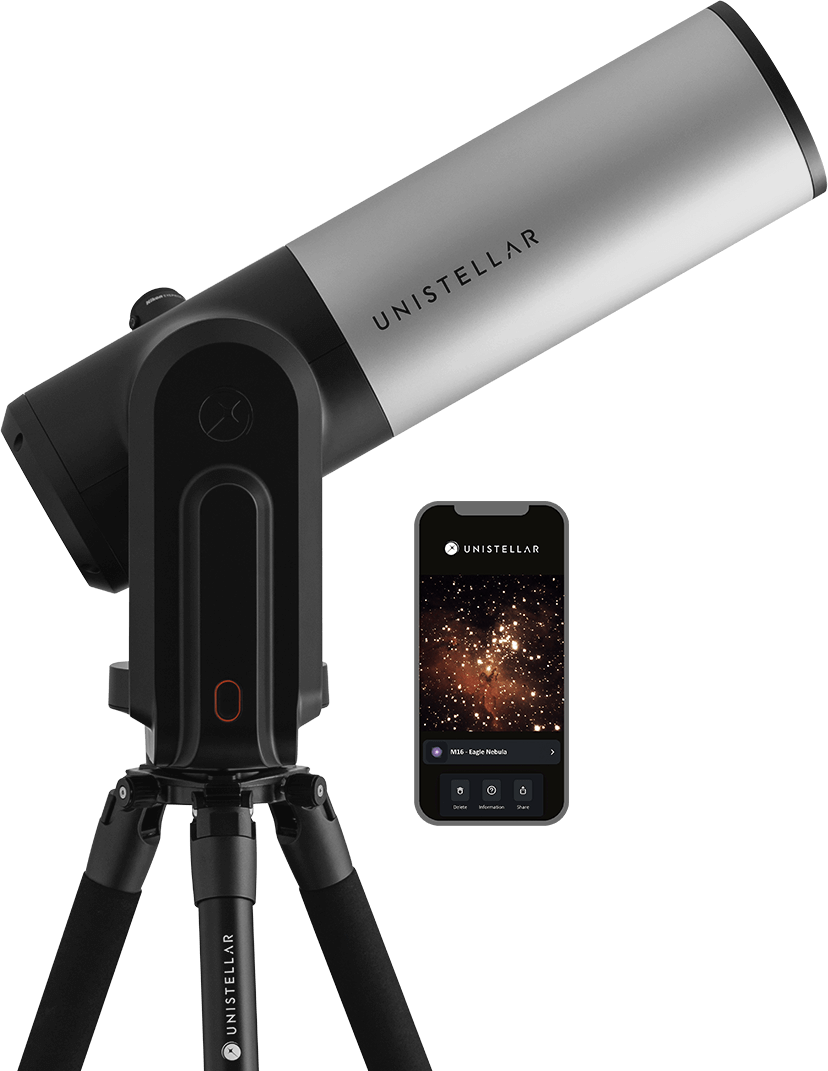Unistellar telescope users contributed to the conquest of space
The leading scientific journal Nature confirmed that Citizen Astronomers equipped with Unistellar smart telescopes can defend our planet
The Double Asteroid Redirection Test (DART): A Mission to Protect our Planet
Unistellar citizen astronomers observed asteroid Dimorphos before, during, and after the impact of the DART spacecraft. Their observations provided important scientific data on the asteroid’s characteristics, which are now published in the prestigious academic journal Nature.
NASA’s Double Asteroid Redirection Test (DART) was the first planetary defense mission of its kind, developed to test humanity’s ability to protect itself from threatening near-Earth objects like asteroids or comets. In September 2022, the DART spacecraft successfully reached its goal by crashing into the asteroid Dimorphos. This historical impact not only changed the trajectory of Dimorphos as expected, but it marked the first time human-kind was able to change the motion of an object in space – and Unistellar observers were there to witness it.

The DART mission successfully changed the trajectory of the asteroid Dimorphos

Users of Unistellar telescopes over five continents successfully contributed to NASA’s DART Mission

Due to the unique, global quality of this community, observers were able to gather over a month’s worth of data on DART’s target asteroid, Dimorphos. Their observations enabled scientists to study the asteroid over time and confirm that it was not destroyed by DART’s impact. Only a network of telescope users, connected through a common tool and working together from across continents, can gather such information that fuels scientific advancement. There is always a clear sky somewhere in the Unistellar Network!

Embark on a scientific journey, discover the Unistellar smart telescopes

By partnering up with renowned scientific organizations such as the SETI Institute and NASA, Unistellar telescopes enables you to participate in groundbreaking research on exoplanets, asteroids, comets, and much more.
* The material contained in this document is based upon work supported by a National Aeronautics and Space Administration (NASA) grant or cooperative agreement. Any opinions, findings, conclusions or recommendations expressed in this material are those of the author and do not necessarily reflect the views of NASA.
